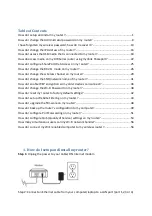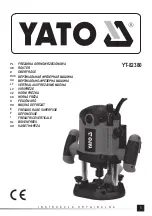
Diagnostic LEDs
Instead of beep codes, errors are indicated via the bicolor Battery Charge/Status LED. A specific blink pattern is followed by flashing a
pattern of flashes in amber, followed by white. The pattern then repeats.
NOTE:
The diagnostic pattern will consist of a two-digit number being represented by a first group of LED blinks (1
through 9) in amber, followed by a 1.5 second pause with the LED off, and then a second group of LED blinks (1 through
9) in white. This is then followed by a three second pause, with the LED off, before repeating over again. Each LED blink
takes 1.5 seconds.
The system will not shutdown when displaying the Diagnostic Error Codes.
Diagnostic Error Codes will always supersede any other use of the LED. For instance, on laptops, battery codes for Low Battery or Battery
Failure situations will not be displayed when Diagnostic Error Codes are being displayed.
Table 9. Diagnostic LEDs
Blinking
Pattern
Problem Description
Suggested Resolution
Amber White
2
1
CPU failure
Replace the system board.
2
2
System board failure (included BIOS corruption or ROM error)
Flash latest BIOS version. If problem persists,
replace the system board.
2
3
No memory/RAM detected
Confirm that the memory module is installed
properly. If problem persists, replace the
memory module.
2
4
Memory/RAM failure
Replace the memory module.
2
5
Invalid memory installed
Replace the memory module.
2
6
System board/Chipset error
Replace the system board.
2
7
LCD failure
Replace the LCD module.
2
8
LCD Power rail failure
Replace the system board.
3
1
CMOS battery failure
Replace the RTS battery.
3
2
PCI or Video card/chip failure
Replace the system board.
3
3
BIOS Recovery Image not found
Flash latest BIOS version. If problem persists,
replace the system board.
3
4
BIOS Recovery Image found but invalid
Flash latest BIOS version. If problem persists,
replace the system board.
NOTE:
For diagnostics pattern 2-amber, 8-white connect an external monitor to isolate between system board or
graphics controller failure.
M-BIST
M-BIST (Built In Self-Test) diagnostics tool, featuring improved accuracy in system board failures.
NOTE:
M-BIST can be manually initiated before POST (Power On Self Test).
How to run M-BIST
NOTE:
M-BIST must be initiated on the system from a power-off state either connected to AC power or with battery
only.
1. Press and hold both the
M
key on the keyboard and the
power button
to initiate M-BIST.
2. With both the
M
key and the
power button
that is held down, the battery indicator LED may exhibit two states:
a. OFF: No fault detected with the system board
Diagnostics
95
Summary of Contents for Vostro 3300
Page 1: ...Dell Latitude 3300 Service Manual Regulatory Model P95G Regulatory Type P95G001 ...
Page 26: ...3 26 Major components of your system ...
Page 27: ...Major components of your system Major components of your system 27 ...
Page 46: ...6 Gently remove the keyboard cable from underneath the keyboard 46 Disassembly and reassembly ...
Page 50: ...3 Press the keyboard until it clicks in place 50 Disassembly and reassembly ...
Page 107: ...Diagnostics 107 ...














































